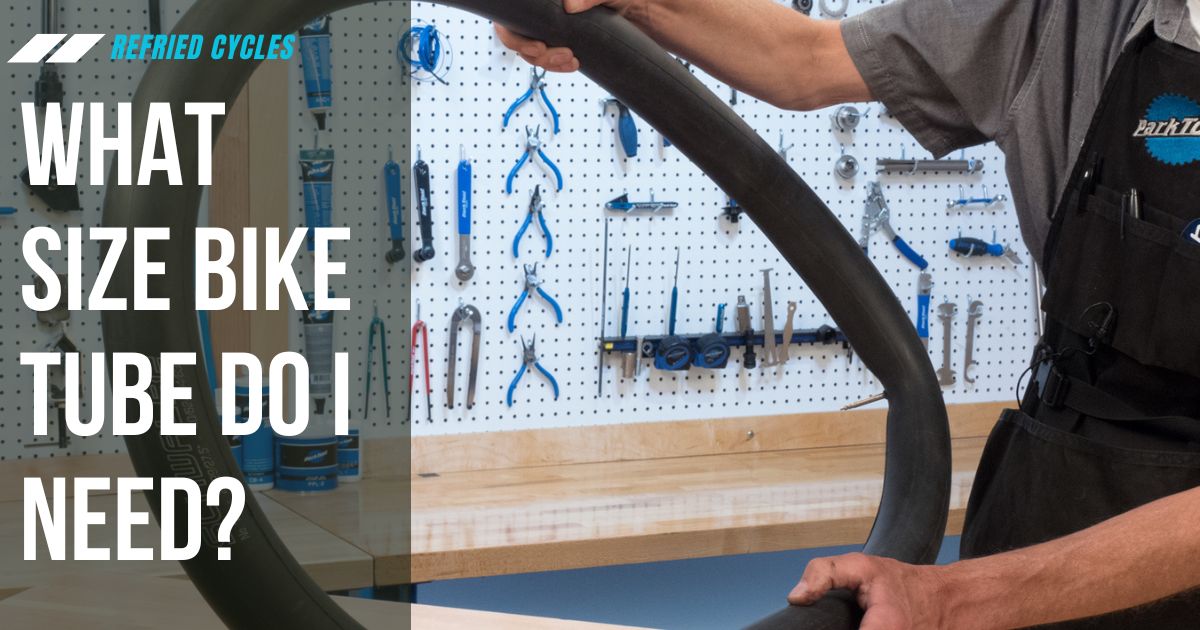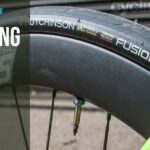Have you ever gotten a flat tire while out on a bike ride? It can be a frustrating experience having to walk your bike back home or to the nearest shop. But with the right size replacement inner tube on hand, you can get rolling again in no time.
In this comprehensive guide, we’ll walk through everything you need to know about the question what size bike tube do i need. We’ll cover common tube sizes, how to read tire sizing, the differences between Presta and Schrader valves, and tips for avoiding mistakes so you select just the right new tube. Let’s get started!
Introduction to Bike Tube Sizing
Bicycle inner tubes sit inside your tires and are inflatable to provide structure and absorb shocks. When you get a flat, you’ll need to determine the right replacement size so it fits correctly within your wheel.
Tube sizing corresponds to tire sizing, which is printed directly on the sidewall of your tires. You’ll see two sets of numbers, such as “26 x 1.95.” The first number refers to your wheel diameter in inches or millimeters if 700c. The second number is your tire width.
Here’s an overview of common bike wheel and tire diameters:
- 26 inch – standard size for mountain bikes
- 27.5 inch – common on newer mountain bikes
- 29 inch – standard for most hybrid and road bikes
- 700c – road bikes (measuring the diameter including the tire which equates to 29”)
Within each diameter, there is a range of widths between about 1 to 3 inches or 18 to 45 mm. Inner tubes are designed for a certain diameter wheel and a range of widths, specified on the packaging.
For example:
- 26 x 1.1-1.5 inches
- 26 x 1.25-2.0 inches
- 700 x 18-23 mm
- 700 x 20-25 mm
As long as the diameter matches your wheel size exactly and the width range covers your tire, it will fit correctly. Now let’s go over the specifics for finding the right bike tube size you need.
What Size Bike Tube Do I Need?
The key to determining which inner tube size you need starts with properly reading the tire size printed on your bike’s sidewalls. This will be two numbers separated by an “x”.
As an example, a tire marked “29 x 2.25” tells us:
- Wheel Diameter: 29 inches
- Tire Width: 2.25 inches
Common bike wheel diameters are:
- 26 inches (mountain bikes)
- 27.5 inches (newer mountain bikes)
- 29 inches (hybrid/road bikes)
- 700c (road bikes – converts to 29″)
The tire width number indicates the inflated casing width between the tire sides, ranging from narrow road tires of 20mm up to ~3 inches on some mountain bikes.
Matching Tube Size
Inner tubes are marked with the diameter range and width range they are compatible with.
To replace your tube, match the:
- Same diameter
- Width range covering your tire width
Additionally, ensure the tube valve type (Presta or Schrader) matches your bike.
For example, if you measured above 29 x 2.25 tires, get a 29 inch tube with width range spanning 2.25 inches, such as “29 x 2.25-2.5”.
Refer to the handy sizing chart below for common tire sizes and the corresponding replacement tube size.
| Tire Size | Inner Tube Size |
|---|---|
| 26 x 1.75 | 26 x 1.75-2.125 |
| 26 x 2.0 | 26 x 1.95-2.25 |
| 26 x 2.25 | 26 x 2.25-2.5 |
| 26 x 2.5 | 26 x 2.50-2.75 |
| 27.5 x 1.75 | 27.5 x 1.75-2.125 |
| 27.5 x 2.0 | 27.5 x 1.95-2.25 |
| 27.5 x 2.25 | 27.5 x 2.25-2.5 |
| 27.5 x 2.5 | 27.5 x 2.50-2.75 |
| 29 x 1.5 | 29 x 1.50-1.75 |
| 29 x 1.75 | 29 x 1.75-2.125 |
| 29 x 2.0 | 29 x 1.95-2.25 |
| 29 x 2.25 | 29 x 2.25-2.5 |
| 29 x 2.5 | 29 x 2.50-2.75 |
| 700×20 | 700×19-25 |
| 700×23 | 700×20-28 |
| 700×25 | 700×23-32 |
| 700×28 | 700×25-35 |
| 700×32 | 700×30-37 |
| 700×35 | 700×32-40 |
| 700×40 | 700×35-44 |
Following this precise sizing methodology guarantees you select the perfect replacement and get rolling again after fixes or flats.
Troubleshooting Size Mismatches
With so many tire and tube sizes available, you may occasionally end up with a slight mismatch between the width ranges. As long as your wheel diameter matches exactly, small width variances can often still work.
However, the optimal setup is matching your tire width as closely as possible within the tube’s range. When the tire and tube sizes differ significantly, you may experience problems like:
- Bulging tubes
- accelerated wear
- tubes pinching or rubbing
- potential blowouts/flats
If your tire width exceeds the upper end of the tube’s range, choose the next size up tube instead. For example, if your tires are 29 x 2.3 inches, don’t select a 29 x 1.75-2.0 tube only supporting up to 2.0 width. Opt for a 29 x 2.1-2.5 tube.
The exception is very narrow road bike tires using standard width tubes. A 700 x 25c tire may work acceptably with a 700 x 28-42mm tube.
When in doubt with mountain bikes, stick closer to the tire measurement for a secure fit. Nobody wants flats from an incompatible inner tube!
Before installing, test fit your new tube within the tire casing and verify:
- Smooth fit without bulging/pinching
- Valve stem aligns well
- Width looks proportional
Making small adjustments is easier before inflation. Carefully check sizing and assess the fit. A little extra diligence as you replace tubes prevents headaches miles into your next ride.
Looking Beyond Size: Important Tube Features
While matching your wheel and tire specs are vital, also evaluate additional characteristics based on your bicycling needs and riding style. Premium design choices provide bonuses like lighter weight and enhanced protection.
Tube Material
Most tubes utilize butyl rubber which balances affordability with good air retention. Yet for racing and lightweight bikes, pricier latex tubes shed weight. Or ultra-durable polybutadiene tubes resist punctures extremely well.
Bead Type
Non-folding beads are a prevalent style, using rigid plastic for solid rim locking security. Folding beads instead use flexible Kevlar materials in a collapsible design inflating identically but storing smaller.
Enhanced Puncture Protection
Various enhanced features help prevent pesky flats. Some tubes incorporate thicker rubber under the tread area for added resilience. Or flexible sealant inside forms a protective layer. You can also purchase separate tire liners.
Evaluate tube materials and components that fit your priorities – whether that’s shaving off grams during climbs, running lower pressures through rock gardens, or simply reliability commuting daily. Assess needs beyond just diameters and width for a tailor-made ride.
Whether you’ve gotten an untimely flat on the trails or want to prepare spare tubes for the long haul, selecting the right size is key. Carefully check your wheel diameter, tire width, and valve type. Reference sizing charts to identify tube dimensions that match your bike’s specs exactly. Stay diligent reading packaging to confirm compatibility.
With the right knowledge, you can successfully navigate the myriad of inner tube options out there. Analyze the terrain you tackle and component needs for your ride style. Invest in quality tubes designed for the demands to keep your bike rolling smoothly mile after mile. For more cycling gear and tire recommendations, check out Refried Cycles at http://refriedcycles.com/ for everything to fuel your riding passion.









